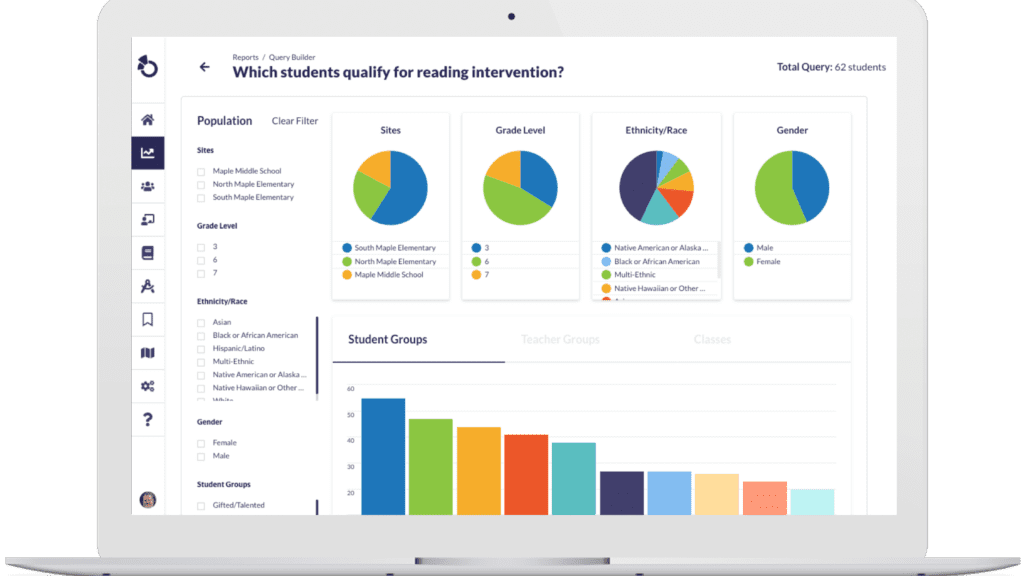A Unified Vision: The First Step to Successful Educational Initiatives
"Educational initiatives are most successful when districts develop an understood agreed upon purpose." - Merri Beth Kudrna
A Familiar Scenario
Summer break is often a time of year when families take vacations or set off on long road trips to visit family and friends. These excursions are no small feat to plan and execute while making it fun for everyone involved. Imagine a scenario where a family of four decides to spend a week visiting relatives who live in Chicago. The parents come up with a budget, find the best route, and plan a few stops along the way.
 Chicago's Navy Pier
Chicago's Navy Pier
Everyone is looking forward to fun times full of new and exciting experiences! However, what do you suppose happens when each person has different expectations of how they'll spend their time? Perhaps one parent wants to go shopping, another parent plans to attend baseball games, sister is looking into theater tickets, and brother pictures eating pizza at every restaurant in the city.
Before you know it, feelings of frustration emerge and the trip quickly turns into one big argument about where to go and what to do. What a letdown! All this confusion could have been avoided had everyone sat down before they left to come up with a set of questions to determine common goals and a plan to accomplish them.
Educational Initiatives Are No Different
This very same scenario can sometimes play out in a school district when implementing a new initiative. Whether it's adopting new technology or a shift in assessment and grading practices, getting everyone on board is an important first step.
I recently had an opportunity to visit with Wood Dale District 7 to learn more about their standards-based grading initiative. As Curriculum Director, Merri Beth Kudrna explains, "We began our SBL Committee work in 2007 with a 3-year implementation plan. This included PD for all staff and parents to sustain our implementations and for budget detail. Since going standards-based, we have consistently offered standards-based learning/grading PD to all teachers, especially for our new teachers who get it every year. Our goals for this initiative are simple, to be aligned, sustainable, ongoing, and collaborative."
According to Lisa Westman, a frequent speaker on standards-based grading, differentiated instruction, and instructional coaching, "Start with ensuring that your teachers have a clear understanding of the universal tenants of standards-based grading and what exactly is non-negotiable in your district. It’s crucial to have a unified vision for the following questions:
- What are we doing?
- Why are we doing it?
- What does that look like?
This strategy for creating a unified vision is exactly the approach that Wood Dale District 7 was demonstrating when I sat in on the first day of New Teacher training. Merri Beth asked, "What does an A or F really mean? Does a 60% tell you precisely what a student knows vs. what they don't know?"
Professional Development is Crucial
"Differentiated professional development like this helps teachers feel confident in moving away from the instructional routines they used to rely on in the past i.e. a student receiving a lower grade from turning in an assignment late. Not including homework as part of the overall grade. Many resistant teachers understand the value of such changes but don’t know how to actually do these things in their daily practice." (Lisa Westman)
Another insightful aspect of the professional development was Wood Dale District 7's "non-negotiables" for standards-based grading. These tenants are a crucial component of the unified vision for this educational initiative and were developed by a team of educators tasked with leading the change towards effective assessment and grading practices.
Once the groundwork was laid about their standards-based learning initiative, Technology Coordinator, Josh Halverson took over. His role was to explain how technology is utilized to support their assessment and grading practices. The order of events is important here, instruction first, technology second.
Teachers Need the Right Tool for the Job
District 7 uses Otus to amplify their teachers’ ability to use assessment data to inform their teaching. The platform is designed for K-12 school systems who are transitioning from traditional grading to standards-based grading. Otus is unique in the sense that it ensures that parents and families also have the tools necessary to understand this shift in grading.
Merri Beth and Josh are doing a fantastic job of getting all arrows pointing in the same direction. In addition to the new teacher training, they also meet regularly with the district's PD committee, provide ongoing professional development and seek to build relationships with other districts working on similar initiatives. We would be happy to connect you with them as well as other districts using Otus for standards-based grading, assessment and data management!
Request a demo!
See exactly how Otus can help your school accelerate student growth and improve student outcomes – all while saving educators time.





